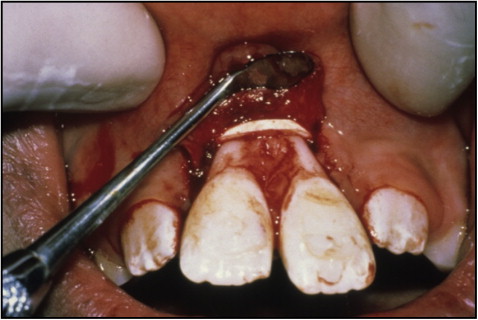The use of elastics in dentistry is not a new development. One of the earliest applications of elastics in dentistry was to extract teeth in patients with bleeding disorders (eg, hemophilia, purpura), cardiac problems, or mental deficiency. The practitioner simply placed a rubber band around the tooth to be extracted; because of the shape of the teeth, the rubber band slowly worked its way up or down the sides of the tooth roots, destroying the bone and soft tissues, and the tooth just fell out, all in about 4 to 6 weeks. This use of elastics was intentional and considered a safe and effective procedure. This procedure is also advocated in the current literature involving patients treated with bisphosphonates. In this context, the characteristics of the elastics and the shape of the teeth are used to effect bloodless, atraumatic extractions.
In a similar way, elastics have been of value in animal research conducted in the area of periodontics. In this context, elastics are placed around the tooth near the gingival sulcus and allowed to submerge into the animal’s periodontal tissues. The elastics destroy the periodontal attachment between the bone and the cementum, and the tissues become inflamed, producing lesions similar to those seen in periodontitis. Once the lesions are produced, the efficacy of various treatments is then tested.
For more than a century, similar examples of this type of elastics use have also appeared in the orthodontic literature, but in a negative sense. Such articles show the possible consequences of using these same principles to close a space (ie, a gap) between 2 teeth. Most of the time, there are no problems, but if the rubber band slides into the soft tissues, it is difficult if not impossible to retrieve it, and it continues along the distal surface of the roots, destroying the periodontal attachment and producing inflammation. As this occurs, the teeth extrude, the crowns fan out as the roots are pulled together, the teeth become increasingly mobile, and then they might just fall out ( Fig ).





